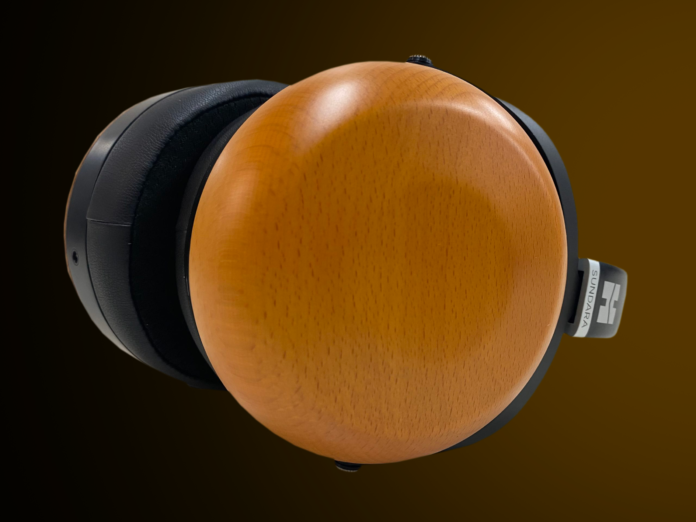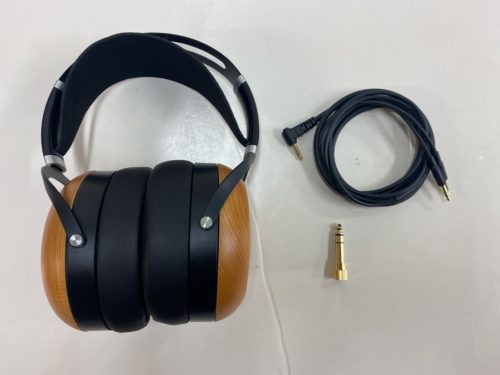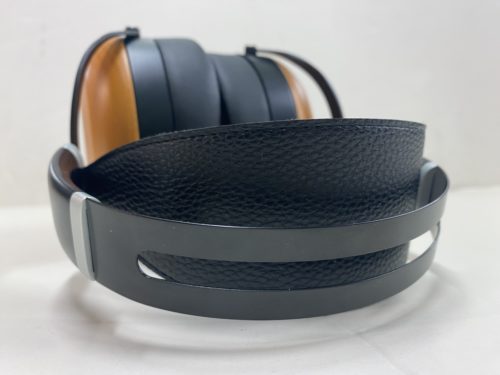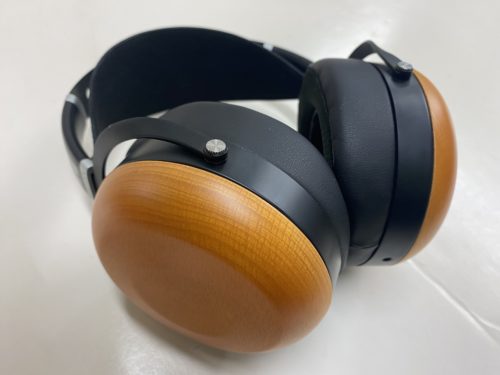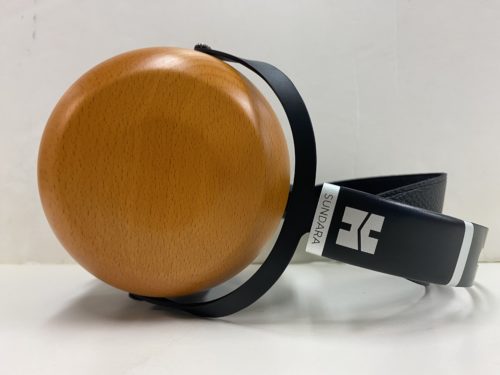Most people that are familiar with the headphone world have definitely heard of the HiFiMAN Sundara. They’re one of the most popular open-back planar headphones due to their great sound and budget-friendly price. The Sundara is a fantastic entry-level headphone for those looking to purchase their first audiophile-type headphone. HiFiMAN has now released a closed-back version of the Sundara, bringing a new interpretation to its established sound. Does it offer a totally different experience for those who prefer closed-back headphones?
What You Get
- Sundara closed-back headphones
- Dual-sided 3.5mm cable connectors with 3.5mm termination
- Quarter-inch jack
Look and Feel
You can call the look of these headphones just the Sundara with a wooden cover over its ear cups. Aside from the wonderfully crafted beechwood shells, this Sundara has the same basic frame as the open-back version. From its suspension to the headband, both Sundara’s are very similar. The open-back Sundara is known for being light too, but the closed-back version adds some weight to it. It isn’t substantial, but a noticeable difference. I definitely felt more pressure on my head than when I listened to the open-back version, but my ears did not get fatigued.
Design
The closed-back Sundara uses a planar magnetic driver with stealth magnets. With the stealth magnets, the Sundara aims to reduce diffraction and unwanted reflections. Its supernano diaphragm is also meant to deliver a fast transient response for a more detailed performance. Even though its impedance is only 20 Ohms, I found the closed-back Sundara to be a little tougher to drive. I used a Fiio Q3 for a bit before switching to using a DAP because the Q3 barely left me with any headroom.
Soundstage
Of course, the closed version of the Sundara isn’t going to touch the open-back version when it comes to the soundstage. However, spatial imaging and layering can be good in their own right. Especially when compared to other closed-back headphones in this price range, this Sundara is quite special. Its soundstage outdoes a lot of closed-backs in terms of width and dimension. It takes the floaty sound environment of the open version and translates that spaciousness to a closed setting. You get a similar wrap-around that encompasses your headspace extremely well. The imaging is as tall as it is wide, even though you’re losing some airiness.
There is a good sense of scale to each instrument and vocal, and they stack up to each other clearly. Even when the more narrow separation can’t quite showcase as much space between each performance, the closed-back Sundara is still very articulate with its positioning. From left to right, tracks can span wider than most closed-backs can in this price range. Back-to-front layering also maintains dimension successfully, and it is the best representation of how the open-back Sundara displays its soundstage.
Low End
I don’t call the open-back Sundaras a particularly bass-heavy headphone. The closed-back version does its best job of offering a more substantial low-end response while maintaining as much clarity as possible. Immediately from the first track, I tested through these headphones, the bass came alive and presented me with a significant force. Its sub-bass response can shake you up, providing a vibrating foundation for the tone. It resonates with a well-controlled rumble that acts as a nice sweetener for certain sounds. Bass instruments have a more forward feel, cutting into the mid-bass with tightness and speed. The level of depth, combined with its growling tone and mid-bass punch makes the Sundara closed-back a potential bass-head favorite.
Mids
A lot of the midrange articulate in the open-back Sundara makes its way to the closed-back version. It maintains realism but sacrifices some spatial elements. Instruments aren’t going to appear as individualized, but the timbre of each note is still going to feel expressive. Instruments and vocals come through in crystal-clear resolution, where specific artifacts can be heard, but not as equally localized. Nothing is ever veiled, and the strong low-mid warmth never clouds the rest of the frequency response in bloatedness. Vocals are sharp and front-facing for enhanced vividness.
Highs
While some presence in the highs is lost with its closed headspace, this Sundara does a fantastic job of keeping its fidelity. Airiness is considerably reduced, but the treble is still expressive in its top end. They have more of a neutral timbre, but spurts of controlled brightness. Its got good snap and sizzle where it needs to. Vocals are heightened by their extension, and cymbals are given a tonal balance with a solid tail. You don’t get as much texture here, but the character of the treble still stands.
Summary
I pretty much enjoyed the closed-back Sundara just as much as the open-back ones. Of course, it has some limitations, like less separation and airiness in the soundstage, but it makes up for it by providing a more impactful bass response and warm midrange. The wooden ear cups give the Sundara a great look too. This is definitely their best closed-back headphone, and it lives up to the Sundara name.

The HiFiMAN Sundara Closed-Back is available at Audio46.
Compare the ranking of various headphones, earbuds and in-ear monitors using our tools.
Discuss this, and much more, over on our forum.
---MAJORHIFI may receive commissions from retail offers.


